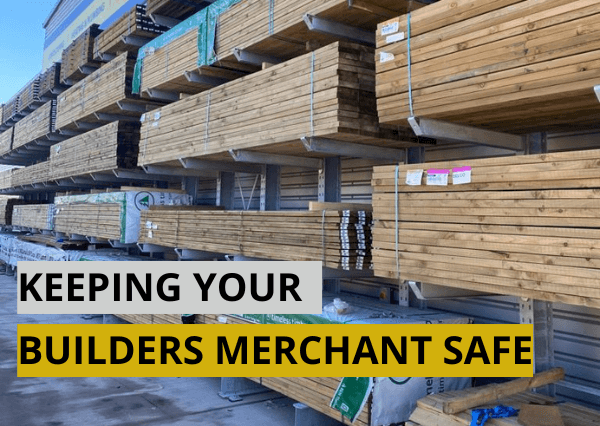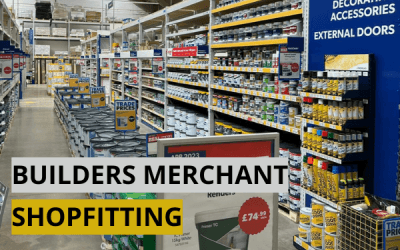Table of Contents
Introduction: More Than Just Metal Beams
Ensuring these vital storage systems are regularly and professionally checked isn’t just ‘good practice’ – a thorough cantilever racks inspection is absolutely fundamental to maintaining a safe environment, saving significant costs down the line, and keeping your operations running like clockwork.
Picture this: it’s a busy Tuesday morning in your builders merchant yard. Forklifts are buzzing, timber stacks are high, and long lengths of pipe and steel need careful handling. Amidst this controlled chaos stand your cantilever racks – the unsung heroes holding those bulky, awkward items that standard pallet racking just can’t handle. They’re essential, no doubt about it. But when was the last time they got more than a quick glance?

It’s easy to see cantilever racks as just static metal structures, doing their job day in, day out. However, beneath the surface, hidden stresses, minor impacts, or even just gradual wear and tear can compromise their integrity. Neglecting them isn’t just overlooking maintenance; it’s potentially ignoring a ticking clock on safety incidents, costly failures, and operational headaches.
Section 1: Why Your Cantilever Racks Need More Than a Glance
Keeping Your Team Safe: The Non-Negotiable Priority
Let’s be frank: safety in a busy builders merchant environment is paramount, and your racking plays a huge role. Cantilever racks, by their nature, hold some of the heaviest, longest, and most unwieldy items you stock – think packs of timber, lengths of steel conduit, or bundles of plastic drainage pipes. If a rack fails, the consequences can be severe.
We’re not just talking about damaged stock; we’re talking about the potential for serious injury to your team members or even customers. Imagine the chaos and danger if an arm gives way or an upright buckles under load. Regular, professional cantilever racks inspection isn’t just about ticking boxes; it’s about actively identifying potential hazards like bent arms, damaged columns, missing safety pins, or compromised floor fixings before they lead to a catastrophic failure. It’s about creating a workplace where your team feels secure, knowing the structures towering over them are sound and properly maintained. This proactive approach is fundamental to fulfilling your duty of care and preventing accidents that no business ever wants to face.
Staying Compliant: Meeting UK Regulations (PUWER & HSE)
Beyond the critical safety aspect, there are legal responsibilities to consider. In the UK, the Provision and Use of Work Equipment Regulations 1998 (PUWER) mandates that all work equipment, which absolutely includes your racking systems, must be maintained in an efficient state, in efficient working order, and in good repair.
The Health and Safety Executive (HSE) also provides guidance, notably in HSG76 (Warehousing and Storage), emphasising the need for regular inspections and maintenance to prevent accidents. While these regulations set the legal baseline, industry bodies like the Storage Equipment Manufacturers’ Association (SEMA) provide detailed best practice guidelines specifically for racking.
Adhering to SEMA guidelines, including their recommendations for inspection frequency and procedures carried out by competent persons (like a SEMA Approved Racking Inspector, or SARI), is the most robust way to demonstrate you’re meeting your legal obligations under PUWER and HSE guidance. Regular documented inspections provide clear evidence of your commitment to safety and compliance, protecting you from potential enforcement action, fines, and the significant reputational damage that can follow a safety breach.
Section 2: Spotting Trouble Early: The Cost-Saving Power of Inspections
Repair, Don’t Replace: Catching Damage Before It Escalates
Think about maintaining your delivery vehicles; you wouldn’t ignore a rattling engine until it seized up completely, would you? The same principle applies to your cantilever racking. Minor damage, often caused by unavoidable knocks from forklifts or the daily loading and unloading of heavy materials, might seem insignificant initially. A small dent in an upright, a slightly bent arm, or a loose floor fixing can easily be overlooked. However, these small issues rarely fix themselves. Over time, under continuous load, they can worsen, compromising the structural integrity of the entire bay or even run of racking.

A professional cantilever racks inspection is designed to spot these seemingly minor issues early on. Addressing a small dent or replacing a damaged arm is significantly cheaper and quicker than dealing with a full-blown rack collapse. The cost of replacing entire sections of racking, not to mention the value of damaged stock and the potential costs associated with an accident, can run into thousands, or even tens of thousands, of pounds. It’s the classic ‘stitch in time saves nine’ scenario – investing a relatively small amount in regular inspections can save you a fortune in potential repair bills, replacement costs, and associated losses.
Minimising Downtime: Keeping Your Yard Running Smoothly
Beyond the direct costs of repair or replacement, consider the operational impact of a racking failure. If a section of cantilever racking becomes unsafe and needs to be taken out of commission unexpectedly, what happens?
Firstly, the stock stored on it needs to be safely removed and relocated – assuming you have space. Secondly, that area of your yard or warehouse becomes unusable, potentially disrupting workflow, blocking access routes, and reducing your overall storage capacity. This disruption translates directly into lost time, reduced productivity, and potentially delayed orders for your customers – all impacting your bottom line.
Regular inspections act as proactive maintenance. By identifying and scheduling repairs for minor issues during planned, quieter periods, you prevent sudden, unexpected failures. This proactive approach ensures your racking remains operational when you need it most, minimising costly downtime and keeping your busy builders merchant yard running efficiently without the chaos and financial drain of emergency repairs and operational standstill.
Section 3: Lightening the Load: How Inspections Help Your Team
Peace of Mind for Management and Staff
Running a builders merchant involves juggling countless priorities, and worrying about the structural integrity of your racking shouldn’t be adding constant stress to the mix. Knowing that your cantilever racks are subject to regular, professional cantilever racks inspection provides invaluable peace of mind for everyone, from the yard manager to the forklift operator. It demonstrates a clear commitment to safety from the top down, fostering a more positive and secure working environment.
Many businesses designate a Person Responsible for Racking Safety (PRRS) – often a manager or supervisor who conducts regular internal checks. While these internal checks are important, supplementing them with an annual expert inspection by a SEMA Approved Racking Inspector (SARI) provides an extra layer of assurance and expert validation.
This documented, professional assessment confirms the safety status of the racking, reducing the burden of responsibility on internal staff and allowing management to focus on other operational demands, confident that a critical safety element is being professionally managed.
Focusing on the Job, Not the Racking Worries
When your team trusts that the racking systems are safe and well-maintained, they can concentrate fully on their primary tasks – serving customers efficiently, managing stock levels accurately, and keeping the yard operating smoothly. Without the nagging doubt about whether a heavily loaded rack is truly secure, staff are less likely to hesitate or adopt potentially inefficient workarounds. Furthermore, a professional inspection report provides clear, actionable information.
It identifies specific areas needing attention, often using a traffic light system (red, amber, green) to prioritise repairs. This clarity simplifies maintenance planning, allowing you to schedule repairs efficiently rather than reacting to unexpected problems. It removes ambiguity and helps streamline the workload associated with racking upkeep, ensuring that resources are directed effectively and that your team isn’t constantly firefighting potential racking issues. Ultimately, it allows everyone to focus on productivity and customer service, rather than being distracted by preventable equipment safety concerns.
Conclusion: Invest in Safety, Save on Hassle
So, when it comes to your cantilever racking, out of sight shouldn’t mean out of mind. As we’ve seen, regular, professional cantilever racks inspection isn’t just another task on the to-do list; it’s a crucial investment in the safety of your team, the financial health of your business, and the smooth running of your builders merchant operation. By proactively identifying potential issues, you prevent serious accidents, ensure you meet UK safety regulations like PUWER, save significant costs by catching damage early for repair rather than replacement, and reduce the daily workload and stress associated with potential racking failures. It’s about creating a safer, more efficient, and more compliant workplace.
Don’t wait for a minor issue to become a major headache. Take control of your racking safety today. Our expert team not only identifies any issues but can also handle the necessary repairs in-house, providing a seamless service to keep your storage safe, compliant, and working hard for your business.




